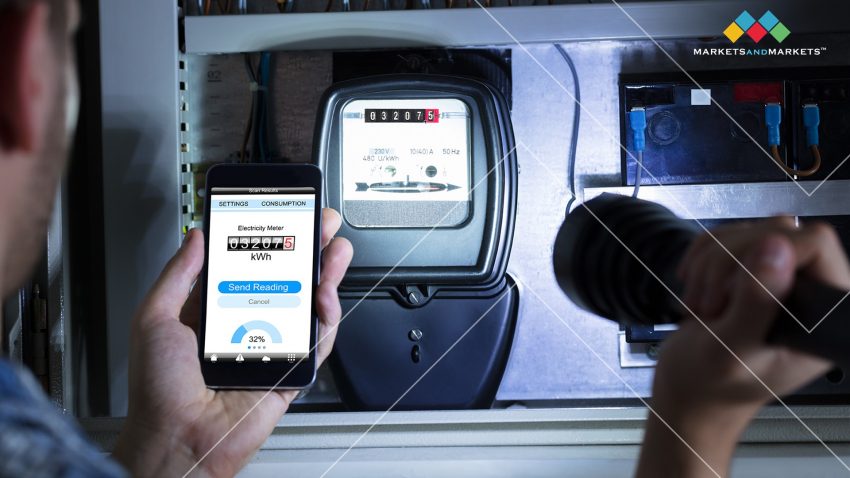The global smart meter market growth is projected to grow from $26.36 billion in 2024 to $46.14 billion by 2030, representing a compound annual growth rate of 9.8%, according to MarketsandMarkets analysis. That’s nearly doubling in just six years, a pace that signals fundamental transformation in how the world manages electricity, gas, and water.
The shift from analog dials to digital intelligence isn’t just about modernization. It’s about survival in an energy landscape where every kilowatt matters, grid failures make headlines, and consumers demand transparency in what they’re paying for.
Why Smart Meter Market Growth Is Accelerating Now
The Major factors driving adoption include stringent government policies to improve energy efficiency and grid management, growing awareness of carbon footprint disadvantages, advantages of contactless billing, and strong demand for data analytics in the electric power industry, according to MarketsandMarkets’ analysis.
Traditional meters are passive observers. Smart meters are active participants in energy management measuring consumption in real-time, detecting anomalies, preventing theft, and enabling utilities to respond instantly to grid stress. The advancement of smart meters combined with sensors and control systems and communication components lets utility systems operate in real-time, transforming what was once a monthly guessing game into continuous dialogue between provider and consumer.
The business case is compelling. Utilities eliminate truck rolls for meter readings, slashing operational costs. Consumers gain visibility into their usage patterns, often through smartphone apps that show energy consumption down to the hour. Businesses can use real-time energy usage details acquired from smart meters to monitor consumption habits and notice usage patterns that need improvement, delivering savings in energy costs that directly strengthen business profitability.
Electric Meters Lead, But Gas and Water Follow
Electric meters are expected to hold the dominant share of the smart meter market in the coming years. This makes sense electricity grids face immediate pressure from renewable integration, electric vehicle charging, and aging infrastructure. Smart electric meters deliver accurate power consumption data through their specific time tick measurements which correspond to electricity market clock intervals, enabling energy providers to establish off-peak price plans with reduced rates which drives consumers toward off-peak energy utilization.
But gas and water utilities aren’t far behind. The same digital infrastructure that revolutionizes electricity metering applies equally to other utilities. Smart gas meters detect leaks before they become disasters. Smart water meters identify pipe bursts within minutes, not days. Infrastructure investment pays dividends across multiple utility types.
Asia Pacific Emerges as the Smart Meter Powerhouse
The Smart meter market growth expansion will show its most rapid growth within the Asia Pacific region, where governments have imposed new rules and companies invest more in transforming grid systems to handle elevated electricity consumption, according to the MarketsandMarkets analysis.
Asia Pacific is expected to be the fastest-growing market for smart meters during the forecast period, with Europe expected to be the second-largest market. This regional leadership reflects massive urbanization, industrial expansion, and governments treating smart grid infrastructure as strategic necessity rather than optional upgrade.
China’s aggressive smart city initiatives, India’s power grid modernization programs, and Southeast Asian nations racing to reduce technical losses all contribute to Asia Pacific’s dominance. The region isn’t just installing meters it’s building entirely new utility paradigms from the ground up.
The Players Shaping Smart Meter Market Growth
Major players in the smart meter market include Landis+Gyr (Switzerland), Itron Inc. (US), Sagemcom (France), OSAKI ELECTRIC CO., LTD. (EDMI) (Singapore), Siemens (Germany), and Sensus (Xylem) (US), the report identifies. These global giants compete through acquisitions, strategic contracts, technology partnerships, and geographic expansion.
Landis+Gyr emphasizes end-to-end AMI solutions integrated with grid management. Itron positions itself as infrastructure-agnostic, supporting multiple communication technologies. Newer entrants focus on software and analytics rather than hardware, betting that data intelligence matters more than the physical meter.
The major strategies adopted by these players include acquisitions, sales contracts, product launches, agreements, alliances, partnerships, and expansions. Market consolidation continues as companies seek scale advantages and geographic reach.
Smart Meter Growth Means for Energy’s Future
The smart meter market growth from USD 26.36 billion to USD 46.14 billion by 2030 represents more than incremental progress in utility infrastructure. It signals a fundamental transformation in how society measures values, and optimizes energy consumption at a time when climate imperatives and resource constraints demand nothing less.
For utilities, the decision is shifting from whether to deploy smart meters to how quickly they can complete rollouts and leverage the resulting data. For technology vendors, opportunities abound for those who can solve interoperability challenges, address cybersecurity concerns, and deliver analytics that translate raw data into actionable insights.
For policymakers, smart meters represent critical infrastructure enabling broader sustainability goals, from renewable energy integration to demand response programs. And for consumers, these unassuming devices mark the beginning of a new relationship with energy, one characterized by transparency, control, and the potential for meaningful conservation.
For comprehensive market forecasts, detailed competitive analysis, and exclusive insights into smart meter technologies, regulations, and regional opportunities, visit the full MarketsandMarkets Smart Meter Market Report.

